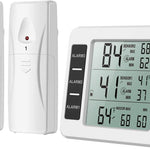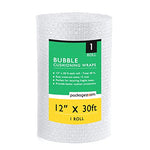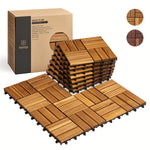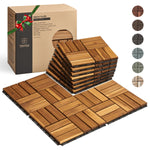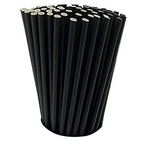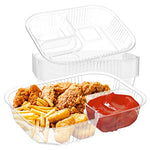You have no items in your shopping cart.
Simplifying Waste Management with Dumpster Liners
Are you tired of dealing with messy, smelly, and hard-to-clean dumpsters? Do you want to streamline your waste management process and ensure a clean and hygienic environment? Look no further than dumpster liners! In this guide, we'll walk you through the ins and outs of dumpster liners, from their benefits and types to proper installation and disposal techniques. Let's dive in!
Dumpster Liners: What Are They and How Do They Work?
Dumpster liners, also known as trash can liners or garbage bags, are durable plastic bags specifically designed to fit inside dumpsters or waste containers. These liners act as a protective barrier, preventing direct contact between the waste and the dumpster itself. They play a crucial role in maintaining cleanliness, reducing odors, and minimizing the risk of contamination.
Dumpster liners are typically made from high-density polyethylene (HDPE) or low-density polyethylene (LDPE), which offer excellent strength and tear resistance. They are available in various sizes and thicknesses to accommodate different dumpster capacities and waste volumes.
Benefits of Using Dumpster Liners
Using dumpster liners brings numerous advantages to waste management systems. Let's explore some key benefits:
- Hygiene and cleanliness: Dumpster liners effectively contain and isolate waste, preventing leaks, spills, and unpleasant odors.
- Contamination control: By minimizing direct contact between waste and the dumpster, liners help reduce the risk of cross-contamination and the spread of pathogens.
- Efficient waste removal: Liners simplify waste disposal, allowing for quick and hassle-free removal of waste without the need for extensive cleaning or scraping.
- Environmental friendliness: Some dumpster liners are made from recycled materials or are recyclable themselves, promoting sustainability and reducing waste sent to landfills.
- Cost-effective: By protecting dumpsters from damage and reducing the frequency of cleanings, liners can save businesses money in the long run.
Types of Dumpster Liners
Dumpster liners come in various types, each tailored to specific waste management needs. Let's take a closer look at the most common types:
1. Clear Dumpster Liners
Clear liners are transparent and allow for easy identification of waste contents. They are commonly used in settings where visual inspection or sorting of waste is necessary, such as recycling centers or facilities that handle multiple waste streams.
2. Black Dumpster Liners
Black liners, also known as opaque liners, are designed to conceal the waste contents. They are widely used in commercial and industrial settings where aesthetics and privacy are important.
3. High-Density Dumpster Liners
High-density liners are known for their excellent strength and puncture resistance. They are suitable for heavy-duty applications and can withstand sharp or bulky waste items.
4. Low-Density Dumpster Liners
Low-density liners offer superior flexibility and are highly tear-resistant. They are commonly used in areas where waste may contain sharp objects or materials that require extra protection.
5. Biodegradable Dumpster Liners
Biodegradable liners are an eco-friendly option that decompose naturally over time. They are ideal for businesses or organizations committed to reducing their environmental footprint.
Installing Dumpster Liners: Step-by-Step Guide
Proper installation of dumpster liners is crucial to maximize their effectiveness and ensure hassle-free waste management. Follow these steps for a successful installation:
-
Choose the right size: Select a dumpster liner that fits the dimensions of your dumpster or waste container. Ensure there is enough material to line the entire interior surface.
-
Prepare the dumpster: Clean the dumpster thoroughly, removing any existing waste or debris. Make sure the interior surface is dry before installing the liner.
-
Unroll the liner: Unroll the dumpster liner and carefully place it inside the dumpster, ensuring it covers the bottom and all sides. Leave some excess liner material hanging over the edges.
-
Secure the liner: Use clips, bungee cords, or other securing mechanisms to hold the liner in place. Ensure a tight fit to prevent liner displacement when waste is added.
-
Smooth out wrinkles: Smooth out any wrinkles or folds in the liner to maximize its capacity and prevent potential punctures or tears.
-
Add waste: Start adding waste to the dumpster while being mindful of the liner's capacity. Avoid overfilling, as it can lead to liner failure or difficulties during waste removal.
Proper Use and Maintenance of Dumpster Liners
To get the most out of your dumpster liners, follow these tips for proper use and maintenance:
-
Regular inspections: Periodically inspect the dumpster liners for any signs of damage, such as tears, punctures, or leaks. Replace damaged liners promptly to maintain their effectiveness.
-
Proper waste disposal: Dispose of waste in a manner that prevents sharp objects or hazardous materials from puncturing the liner. Separate and handle waste streams appropriately to avoid contamination.
-
Odor control: Utilize odor-control measures, such as deodorizers or scent-infused liners, to combat unpleasant odors. Regularly clean and sanitize the dumpster to maintain a clean and fresh environment.
-
Regular liner replacement: Replace dumpster liners at regular intervals to ensure optimal performance. The frequency of replacement will depend on the waste volume, type, and environmental factors.
FAQs About Dumpster Liners
1. Can I reuse dumpster liners?
Yes, some dumpster liners can be reused if they are still in good condition. However, it is essential to thoroughly clean and sanitize them before reuse to maintain hygiene standards.
2. Are dumpster liners recyclable?
Many dumpster liners are made from recyclable materials, such as LDPE or HDPE. Check with local recycling facilities to determine if they accept plastic film or dumpster liners for recycling.
3. Can I use regular garbage bags as dumpster liners?
While regular garbage bags may provide some temporary lining, they are not specifically designed for the rigorous demands of dumpsters. Dumpster liners offer superior strength, tear resistance, and size options suitable for dumpsters.
4. Are there any regulations regarding the use of dumpster liners?
Regulations regarding the use of dumpster liners may vary depending on local waste management guidelines or industry-specific requirements. Check with local authorities or regulatory agencies to ensure compliance.
5. How can I dispose of dumpster liners responsibly?
Proper disposal of dumpster liners is essential for environmental sustainability. Here are a few responsible disposal methods to consider:
- Check with local recycling facilities if they accept plastic film or LDPE materials for recycling.
- Some manufacturers offer recycling programs specifically for dumpster liners. Research and contact these companies to inquire about their recycling initiatives.
- If recycling is not available, dispose of the liners in designated landfill bins. Ensure they are empty and free from any contaminants.
- Consider exploring composting options for biodegradable dumpster liners. Contact local composting facilities to inquire about their acceptance of such materials.
6. Can I use dumpster liners for hazardous waste?
Dumpster liners may not be suitable for hazardous waste disposal due to their limitations in containing certain hazardous substances. Consult local regulations and waste management experts to determine appropriate disposal methods for hazardous waste.
Conclusion: Streamline Waste Management with Dumpster Liners
Dumpster liners are a practical solution for efficient waste management. By preventing leaks, reducing odors, and simplifying waste removal, they contribute to a cleaner and more hygienic environment. Choosing the right type of liner for your needs, properly installing it, and disposing of it responsibly will help you optimize your waste disposal process.
Remember, using dumpster liners is not only a smart choice for your business but also a step towards a greener and more sustainable future.


